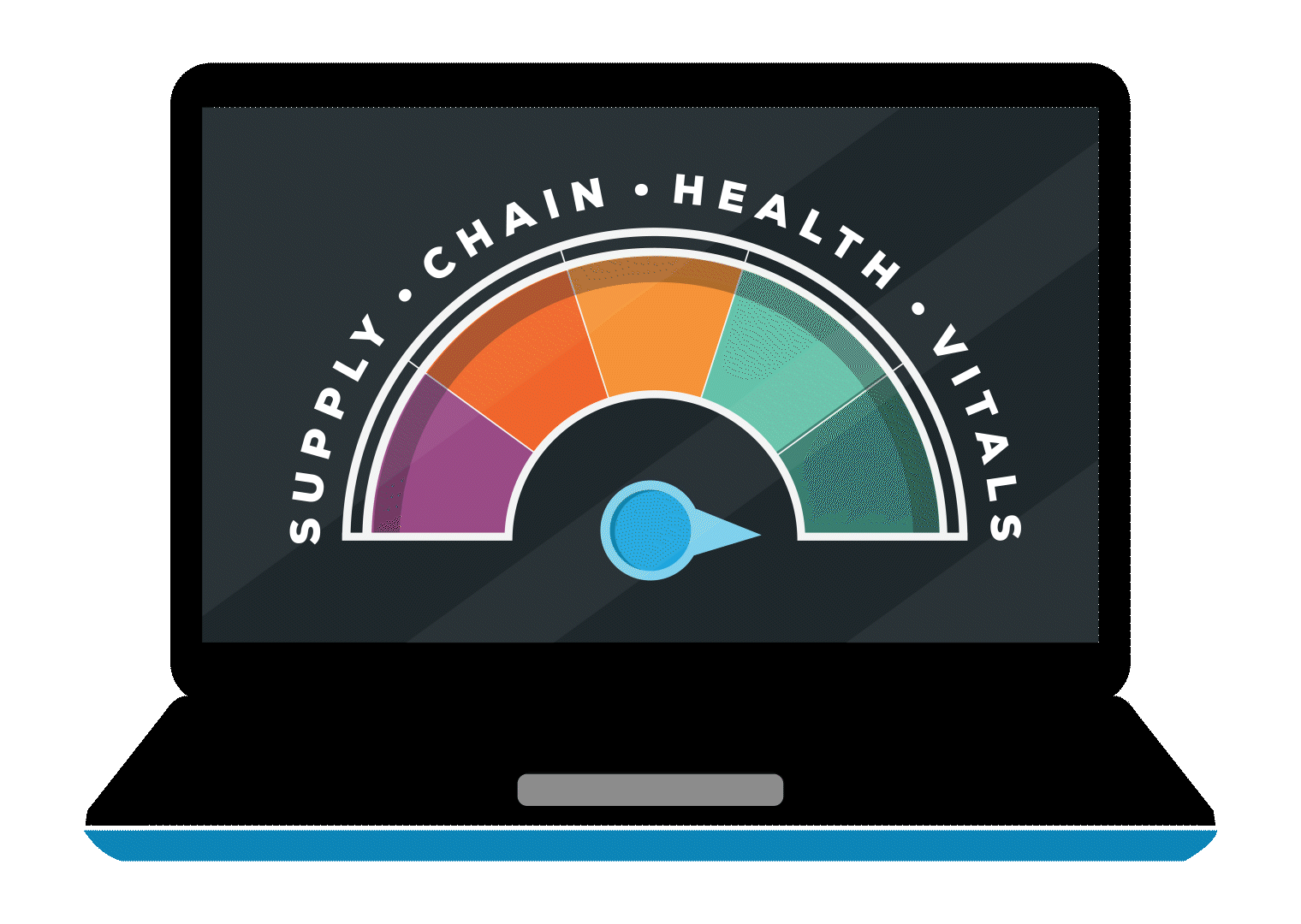Your path to optimized inventory management is clear
Moving inventory efficiently through your supply chain is critical to your business. But effective inventory management is impossible when the data you receive from suppliers is missing, incomplete or inaccurate.
Inventory management without the guesswork
Have you asked questions like:
How much inventory do my suppliers have on hand?
What products have my suppliers shipped?
When will shipments arrive at my warehouse or distribution center?
How can I partner with suppliers to avoid stockouts?
Where can I cut holding costs without adding excess safety stock?
Without clear answers, these questions can lead to delays, extra costs and unhappy customers.
To manage the flow of inventory from suppliers, you need detailed information before goods arrive at your facilities. This includes what products are shipping, when they’ll arrive and how orders are packed.

How healthy is your supply chain?
Tired of inventory management surprises? Identify the supplier performance gaps that cause inventory issues with our Health Vitals tool.
A lack of critical data can cost time and money, resulting in:
- Bottlenecks in receiving, put away and packing
- Delays getting products to stores and to consumers
- Overstaffing or understaffing
- Slow inventory turns and excess safety stock
- Inability to support cross-docking or flow-through distribution
- Inefficient storage of goods
By automating data exchange with your suppliers, you can move inventory faster, reduce holding costs, optimize stock levels and improve customer experience.
Frequently asked questions about inventory management
How does inventory management reduce holding costs?
Effective inventory management reduces excess stock, which lowers holding costs for storage space, insurance, security and the risk of obsolescence or spoilage. With accurate supplier data, you can avoid over-ordering and the expenses of carrying unnecessary inventory.
How can I optimize stock levels without risking stockouts?
Optimizing stock levels is a balancing act. Timely, accurate supplier data shows what inventory is on hand, what is in transit and when new shipments will arrive. With this visibility, you can maintain the right stock levels to meet demand while minimizing excess safety stock.
What is the role of a purchase order acknowledgement in inventory management?
The EDI 855, or purchase order acknowledgement, is an electronic document a supplier sends to confirm receipt and acceptance of a purchase order. This confirmation provides early visibility into what the supplier plans to ship, allowing you to plan inbound inventory and maintain stock levels.
What is the role of an advance ship notice in inventory management?
The EDI 856, or advance ship notice, provides details about an incoming shipment before it arrives, including products, quantities and packaging. This information helps you prepare for receiving, allocate staff and plan for put-away or cross-docking, improving throughput and inventory management.
How does visibility into supplier inventory support inventory management?
Visibility into supplier on-hand inventory and inventory in transit strengthens your inventory management strategy. With this information, you can make better purchasing decisions, reduce the risk of stockouts and lower holding costs. Instead of guessing, you can see what suppliers have available and adjust your orders or safety stock accordingly.
What is the difference between inventory visibility and inventory accuracy?
Inventory visibility involves knowing what suppliers have on hand and what is in transit, while inventory accuracy is the reliability of that data. Both are key to optimizing inventory management. Retailers that exchange data with suppliers gain inventory visibility, which reduces stockouts, prevents excess safety stock and lowers holding costs.
How does inventory management impact demand forecasts?
Inventory management and demand forecasts go hand in hand. Without accurate, timely supplier data, forecasts rely on assumptions instead of actual supply. Visibility into supplier stock levels and inventory in transit allows you to align forecasts with real availability, leading to better purchasing decisions and lower costs.
How can vendor onboarding improve inventory management?
Smooth vendor onboarding ensures suppliers provide accurate, timely data from the start. When onboarding is consistent, you gain earlier visibility into shipments and stock levels, which reduces delays, improves order accuracy and lowers holding costs. Strong onboarding also creates a foundation for supplier collaboration, making it easier to share the data needed for better inventory management.
How does poor supplier collaboration affect inventory management?
Without strong supplier collaboration, inventory management suffers. Incomplete or inaccurate data leads to stockouts, excess safety stock and delays in replenishment. These issues increase holding costs and make it harder to maintain the right stock levels. Over time, the ripple effect can also reach customers through empty shelves or late deliveries.
How can I use data from SPS to improve my inventory management?
The SPS Supply Chain Performance Suite provides a unified view of supplier data to analyze and improve supplier performance. This enables proactive stock management, accurate demand forecasts and reduced holding costs.
Strategies for better inventory management
If you want to:
Reduce holding costs
Improve fill rates
Increase inventory turns
Strengthen demand forecasts
Minimize stockouts

Bill Gratke, Senior Vice President, Supply Chain, Planning and Reporting
Take the next step toward stronger inventory management
Access our free guide to discover how supplier collaboration keeps your inventory moving in the right direction.
Better inventory management starts with the right data
The SPS Supply Chain Performance Suite includes the technology, expert team and proven process to automate the exchange of data with your supplier community. Reduce inventory inefficiencies by understanding exactly what products have shipped, when they shipped and how they’re shipped.